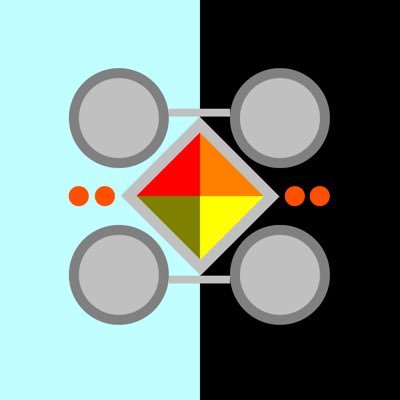結果
| 問題 | No.34 砂漠の行商人 |
| コンテスト | |
| ユーザー |
 yuma25689 yuma25689
|
| 提出日時 | 2015-11-28 14:08:27 |
| 言語 | Python3 (3.14.2 + numpy 2.4.0 + scipy 1.16.3) |
| 結果 |
WA
|
| 実行時間 | - |
| コード長 | 2,815 bytes |
| 記録 | |
| コンパイル時間 | 154 ms |
| コンパイル使用メモリ | 12,800 KB |
| 実行使用メモリ | 11,392 KB |
| 最終ジャッジ日時 | 2024-09-14 04:50:14 |
| 合計ジャッジ時間 | 10,795 ms |
|
ジャッジサーバーID (参考情報) |
judge2 / judge3 |
(要ログイン)
| ファイルパターン | 結果 |
|---|---|
| other | AC * 25 WA * 1 |
ソースコード
''' 入力 N V SX SY GX GY L11 L21 L31 ⋯ LN1 L12 L22 L32 ⋯ LN2 ⋯ L1N L2N L3N ⋯ LNN 1行目に、砂漠の1辺の長さを表す整数 N (3≤N≤100)、 太郎君の体力値を表す整数 V (1≤V≤10000)、 太郎君の初期位置を表す整数の組 (SX,SY)(1≤SX,SY≤N)、 次の街の位置を表す整数の組 (GX,GY)(1≤GX,GY≤N)、 がスペース区切りで与えられます。 続くN行に、それぞれの場所の砂漠レベル LXY (0≤LXY≤9) が空白区切りで与えられます。 初期位置(SX,SY)と次の街の位置(GX,GY)は、同じ座標になることはありません。 出力 太郎君が死なずに、最も早く次の街へ着く最小の移動回数。 どうやっても生きてたどり着けない場合は −1 を出力すること。 最後に改行すること。 No.20との違いは、移動コストの最小ではなく、移動回数の最小を求めなければならないこと? すなわち、基本的には、移動回数の方でdijkstraをかける ただし、その更新条件に、移動コストがHPを異常にならないこと、を加えれば良い? 本当にそんな簡単にいくだろうか・・・ ''' import sys import heapq INF = 1e10 edgeLen,HP,startX,startY,goalX,goalY=map(int, input().split()) damages=[list(map(int, input().split())) for j in range(edgeLen)] damageSum=sum(x for x in range(len(damages))) # print(edgeLen,HP,startX,startY,goalX,goalY) # print(damages) # 隣接ノード計算用 NextCoords=[(1,0),(0,1),(-1,0),(0,-1)] if damageSum < HP: # 一番近い距離で行けるはず print(abs(goalX-startX)+abs(goalY-startY)) sys.exit(0) # 考えられる最大の体力 # HP_consider_max = 9*edgeLen + 9*edgeLen # 座標と残体力に対するコストをメモ化 remainHP_Temp=[ [-1 for x_ in range(edgeLen)] for y_ in range(edgeLen)] remainHP=[ [-1 for x_ in range(edgeLen)] for y_ in range(edgeLen)] # スタート位置を残体力MAXで初期化 remainHP[startY-1][startX-1] = HP for moveCount in range(1,edgeLen*2+1): # 1ループで1進むと見なせば良い? for y in range(edgeLen): for x in range(edgeLen): if remainHP[y][x] == -1: # print(x,y,damage,"=INF") continue for dx,dy in NextCoords: to_x,to_y=x+dx,y+dy if 0<=to_x<edgeLen and 0<=to_y<edgeLen: if 0 < remainHP[y][x] - damages[to_y][to_x]: # print( x, y, "=>", to_x, to_y, ":",minCostOfStatusTemp[to_y][to_x][hp - damages[to_y][to_x]] ) remainHP_Temp[to_y][to_x] = max( remainHP_Temp[to_y][to_x], remainHP[y][x] - damages[to_y][to_x] ) if 0 < remainHP_Temp[goalY-1][goalX-1]: print(moveCount) sys.exit(0) remainHP = remainHP_Temp.copy() remainHP_Temp=[ [-1 for x_ in range(edgeLen)] for y_ in range(edgeLen)] # 見つからなかった print(-1)
